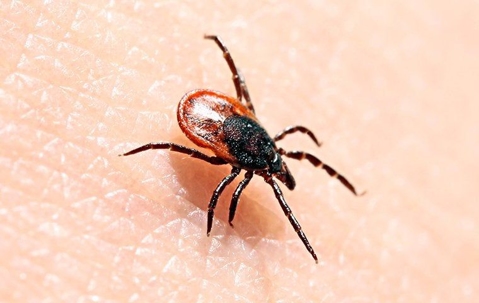If you’ve ever come across a tick crawling across your body (or even worse, stuck on your body), then you likely know the feeling of sheer disgust as you frantically try and get it off. Even if ticks don’t freak you out as much as they do for many, they are never a pleasant surprise to come across due to their blood-sucking nature.
In Colorado, wet springs and summers mean an increased chance of finding a tick on you or your pet’s body when you head home from spending time in the great outdoors. With tick season being right around the corner, we wanted to make a post about the different types of ticks you might come across here in Colorado and any health hazards you should be aware of before you head out into the wilderness.
What Is A Tick?
A tick is a small insect that is a part of the arachnid family, which is the same family that spiders belong to. Blood meals are a crucial aspect of their life cycle with all adult ticks needing it in order to survive, making both humans and pets alike prime targets. Ticks are also known to spread diseases through their saliva, so being bit by one puts you at an increased risk of disease. The types of diseases they carry will depend on the type of tick and the region in which they live.
Types Of Colorado Ticks
In Colorado, some of the most common types of ticks include the Brown Dog tick, the Rocky Mountain wood tick, and the American Dog tick. In order to get a better idea of where the different types of ticks are found throughout the state, you can view this map from the Colorado Department of Public Health and Environment that breaks it down by county.
What Diseases Do They Carry In Colorado?
- Rocky Mountain Spotted Fever — This is a serious bacterial illness that is spread through the bite of an infected tick and can be deadly if it is not treated early with the right antibiotic. Common symptoms of this disease include fever, headache, and rash. While it may sound like it is the most common in our region due to the name, it is actually more commonly found in the Midwest and Southeast parts of the United States. All three of the types of ticks in Colorado are able to spread this disease, so if you are bit by a tick, just keep an eye on how you feel and see a doctor if you begin to experience any of the aforementioned symptoms.
- Tick-borne relapsing fever — This is another bacterial infection spread by the bite of an infected tick that can cause recurring bouts of fever, headache, nausea, and muscle and joint aches and pains.
- Tularemia — This disease can infect both humans and animals, and the symptoms will vary depending on how the person was infected. In most cases, symptoms begin with rapid onset of flu-like symptoms including chills, fever, headaches, muscle pain, and general feelings of ill health. In most cases, tularemia can be treated successfully with antibiotics.
- Colorado tick fever — Colorado tick fever is a rare viral disease that is spread by infected Rocky Mountain wood ticks. The most common symptoms include fever, chills, body aches, headaches, and fatigue. Some will also experience sore throat, vomiting, skin rashes, or abdominal pain.
Ways To Protect Yourself From Ticks
The best way to protect yourself from tick bites is with proper prevention methods. Utilize EPA-approved tick repellent as these are effective against ticks. When shopping for this product, look for ones that contain DEET, IR3535, Picaridin, or oil of lemon eucalyptus. You will want to treat both your clothing and your gear with a tick repellent before adventuring into the wilderness in order to avoid ticks from crawling through to your skin and biting. To take your tick prevention even further, when walking any trails, aim to stay in the center and not heading into any wooded, brushy areas with high grass as this is where they are typically found.
When you come back from your trip, do a check for ticks on both your clothing and yourself. While you can do this check on your own, we suggest having a buddy check you as well as there are some areas you likely won’t be able to see (for example, your back). When checking for ticks, be sure to look:
- Under your arms
- In, around, and behind your ears
- Inside of your belly button
- Behind your knees
- In and around your hair
- Between your legs
- Around your waist
Ticks can also be carried on your clothes, so be sure to tumble dry all of the clothing that you wore/took with you on your trip in a dryer on high heat for ten minutes. This will help to kill any potential ticks that invited themselves back to your home.
What To Do If You Do Find A Tick On Your Body
If you do come across a tick on your body, try your best not to panic. The key is to have it safely removed as soon as you can. While there are specialized products on the market for tick removal, fine-tip tweezers work just as well.
If you have any other questions regarding tick removal or are experiencing a large number of ticks around your business or home, please don’t hesitate to reach out to our pest control professionals in Castle Rock. We handle pest control problems of all types and sizes and would be more than happy to work with you in order to come up with a plan that best suits your needs and your budget.

